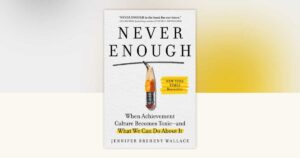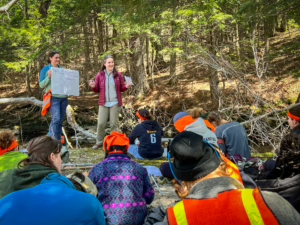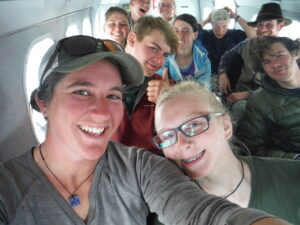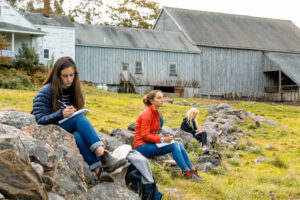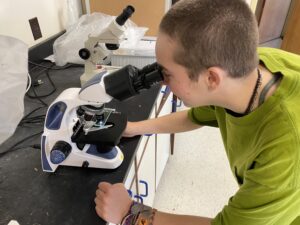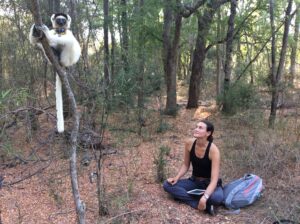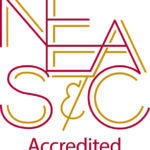In the American Museum of Natural History’s Hall of Biodiversity, there is a sign bearing the words of biologist Paul Ehrlich:
“IN PUSHING OTHER SPECIES TO EXTINCTION, HUMANITY IS BUSY SAWING OFF THE LIMB ON WHICH IT PERCHES.”
Writer Elizabeth Kolbert references this sign in her book The Sixth Extinction: An Unnatural History. Copies of the book are scattered across the tables as ten Maine Coast Semester at Chewonki students begin their Environmental Issues class. Teaching Fellow Drew Higgins, who works alongside teacher and Dean of Academics Peter Sniffen, stands in the front of the room, her auburn hair pulled back in a smooth ponytail.
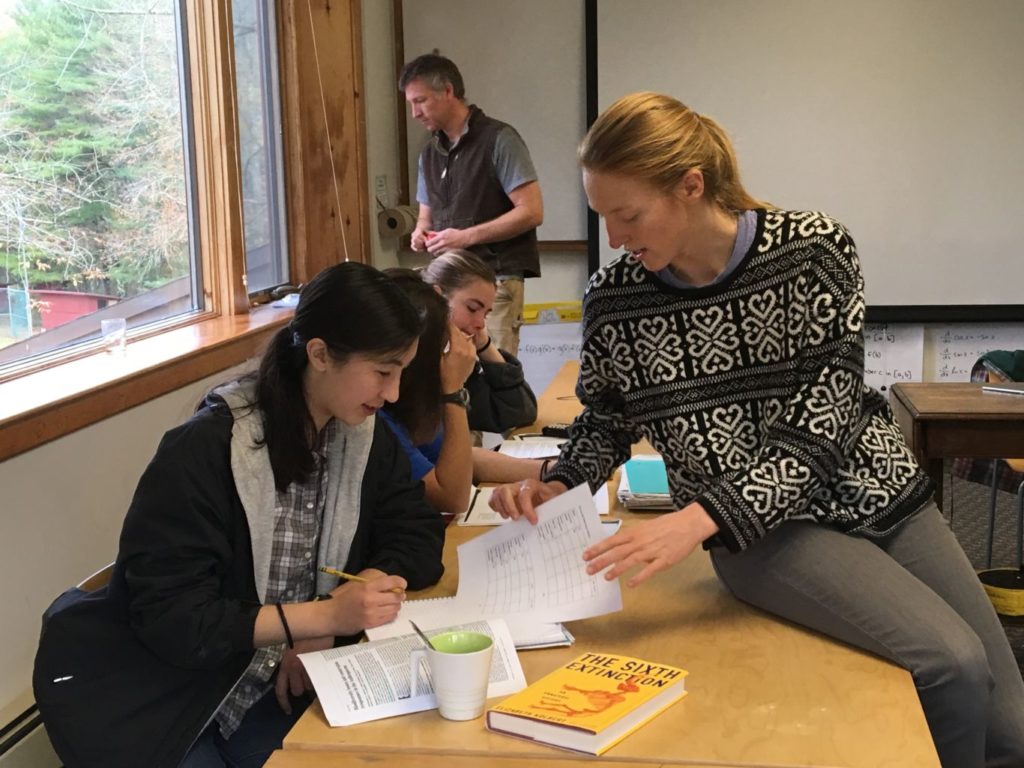
Higgins launches a discussion of Kolbert’s book, which describes five historical mass extinctions and the current astounding rate of species loss around the world. “Biodiversity loss intersects with climate change, nutrient pollution, habitat destruction, disease—it’s got it all,” says Higgins.

“You know that idea that if you pull on one thread you’ll find it’s connected to everything else in the universe?” she asks the students, paraphrasing naturalist John Muir. “It’s that way with species loss. Ecosystems are interconnected and species are interconnected. The loss of species cascades through an ecosystem.”

Environmental Issues at Maine Coast Semester is not a course where you can sit back and daydream. You must bring yourself–your questions, your concerns, your hopes–to the table.
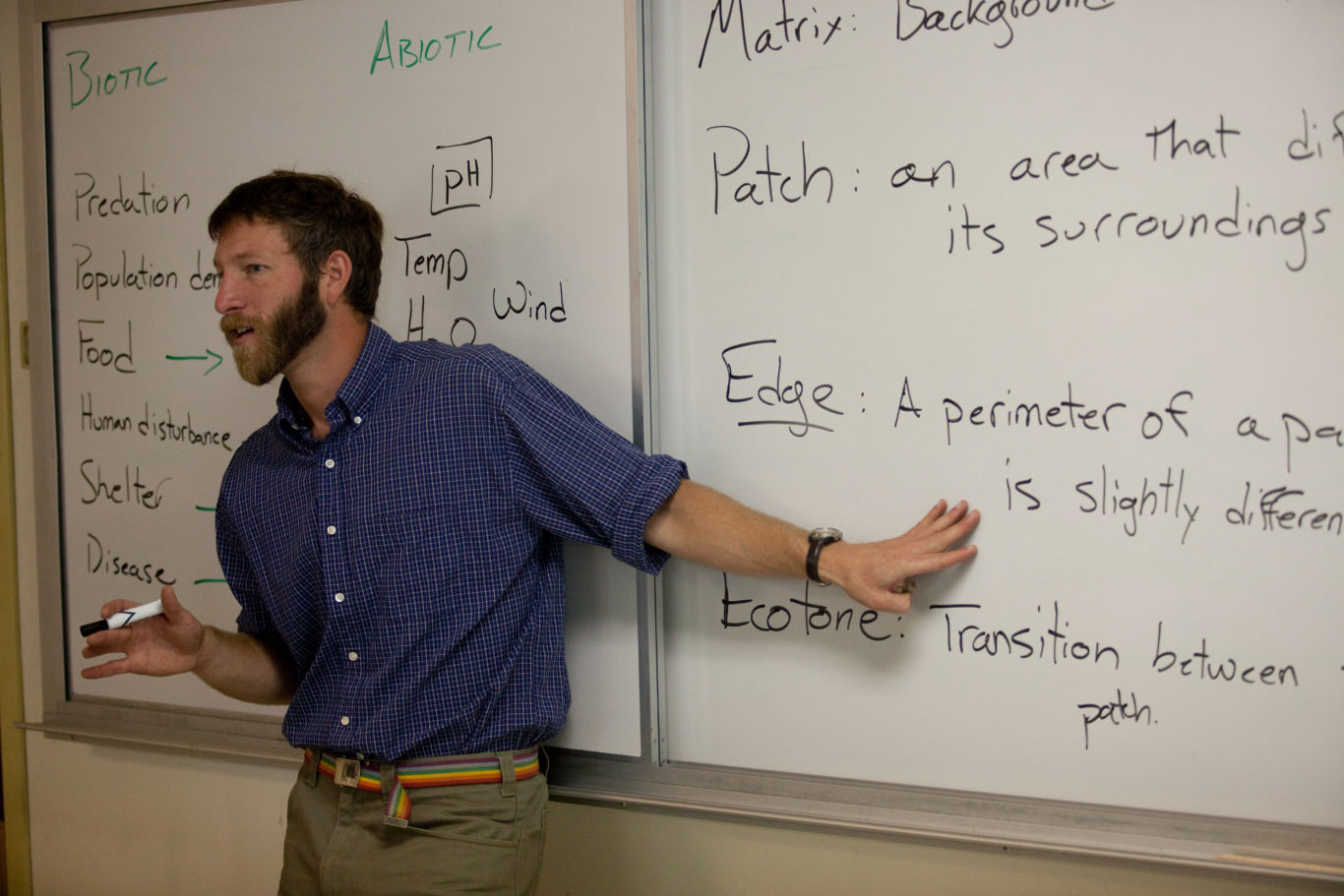
Sniffen loves the course because it “feels truly relevant,” he says. “The young people coming here are fired up about this stuff. This is a class where opinions matter and understanding others’ opinions matters.“
Student Saoirse Bartlett of Eastport, Maine, agrees. “I think it’s an amazing class,” she says, breaking into a big smile. “We get a lot of time to discuss what we read and we read a lot of different kinds of writing–scientific readings, popular science [such as Kolbert’s book], essays…There’s a very open atmosphere for thinking and talking. We have to try to understand different points of view and explain our own.”
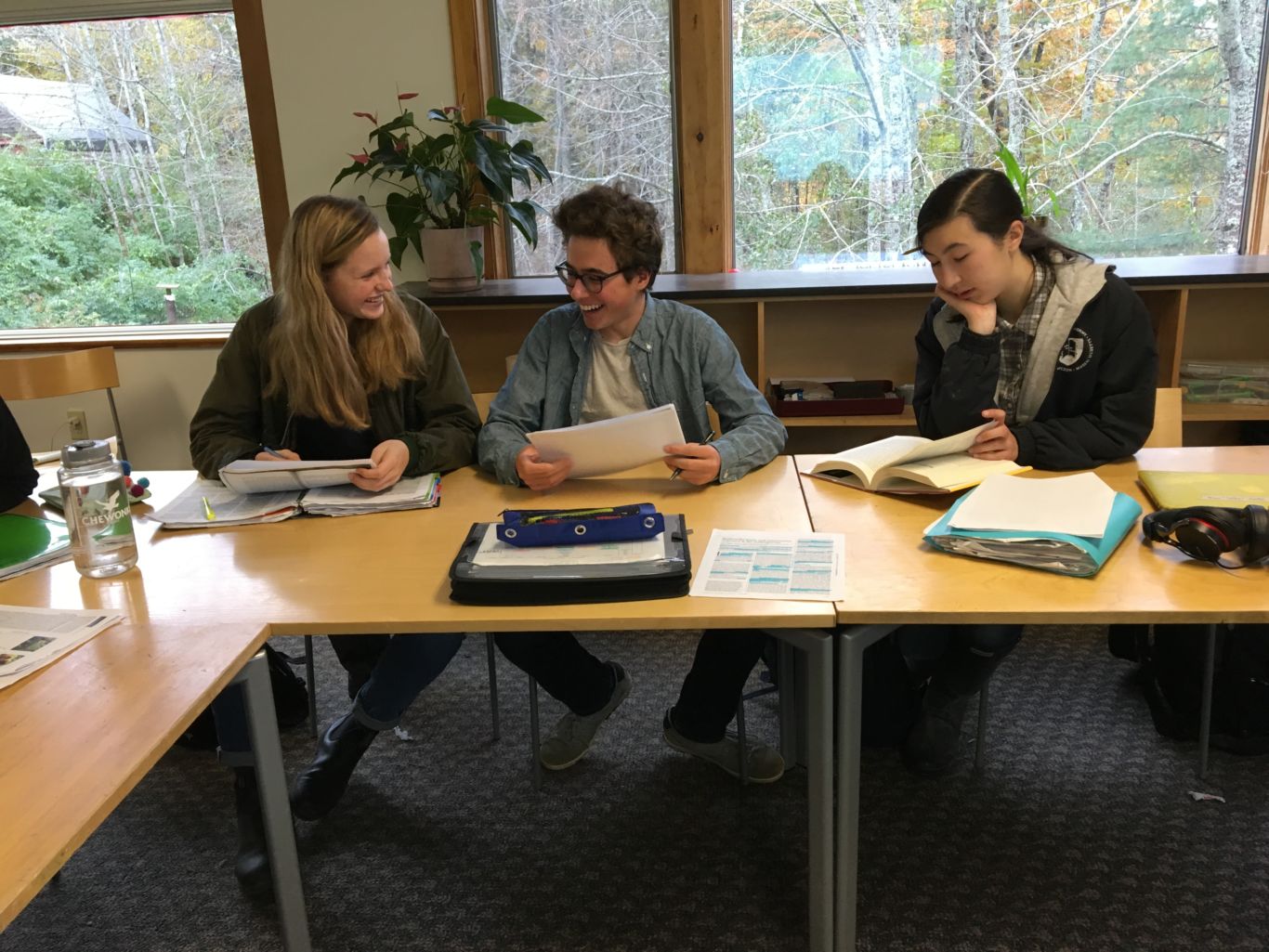
What they are discussing in Environmental Issues resonates with what they are learning in other classes. In their science course, for example, they have been wading into the salt marsh to study crabs, snails, and smooth cordgrass and investigating nearby Montsweag Brook, where a dam removal a few years ago has caused species variety and distribution to shift.
Higgins moves to bring big ideas about biodiversity down to scale on Chewonki Neck. How should we go about measuring biodiversity here and tracking species changes?
Scientists “have ways to quantify measurements of the loss of diversity,” she explains. One approach is to map a modest-sized land area–not too big and not too small–within the territory in question, collect data about the flora and fauna, and then use the Shannon biodiversity index (named for mathematician Claude Shannon) to calculate how much land each species needs to thrive. This kind of analysis helps quantify and shape conservation efforts.
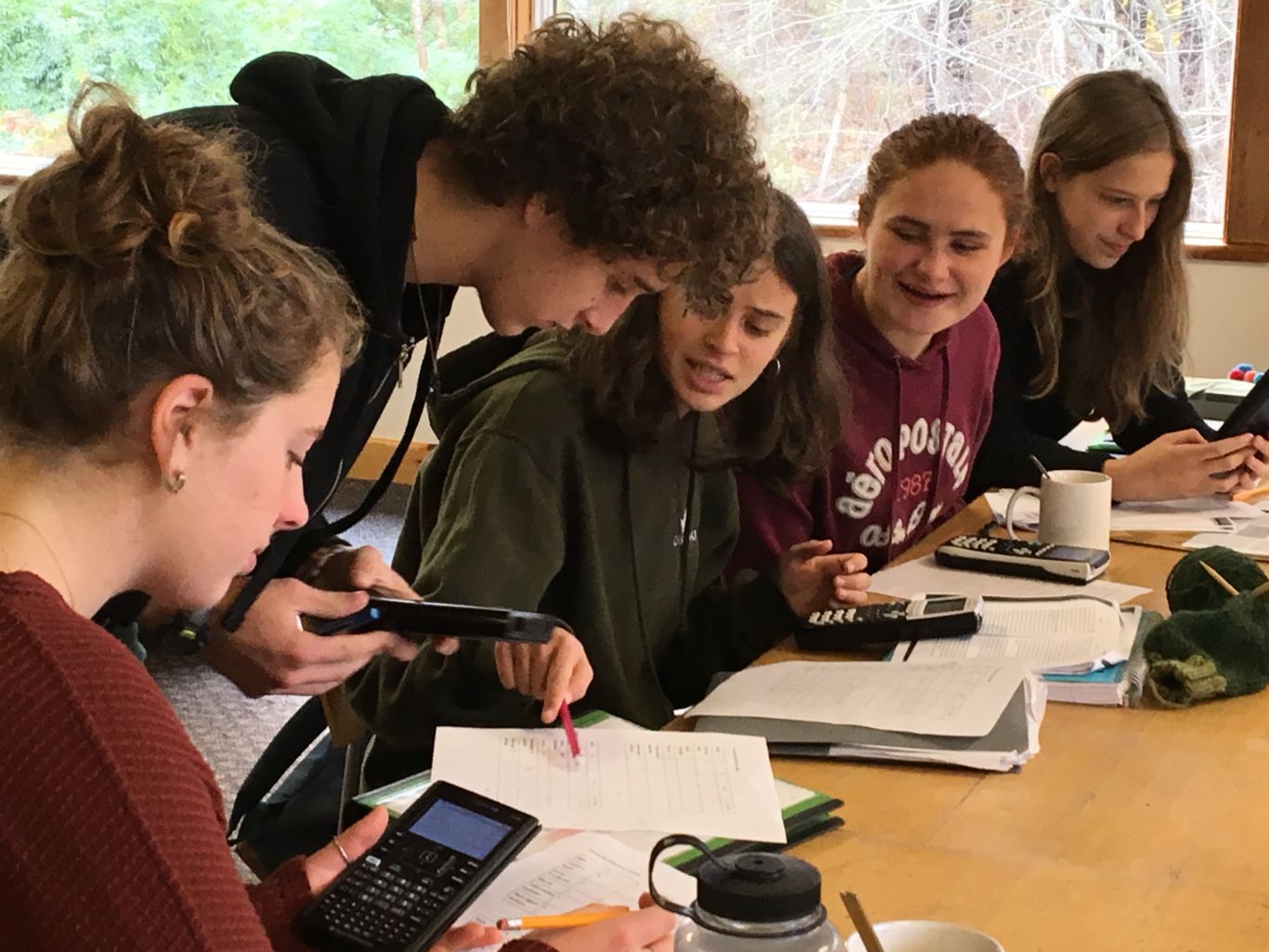
Now the students practice using the species-area formula in an analysis of Chewonki Neck. They set cups of tea and coffee aside and huddle over their calculators, trading suggestions, scratching pencils across paper, and brainstorming as Higgins and Sniffen move around the room, connecting with each group.
Sniffen straightens up and raises his voice. “The value of a mathematical description of the world is that it becomes universally comparable,” says Sniffen. “If you want to be a scientist, study statistics!”
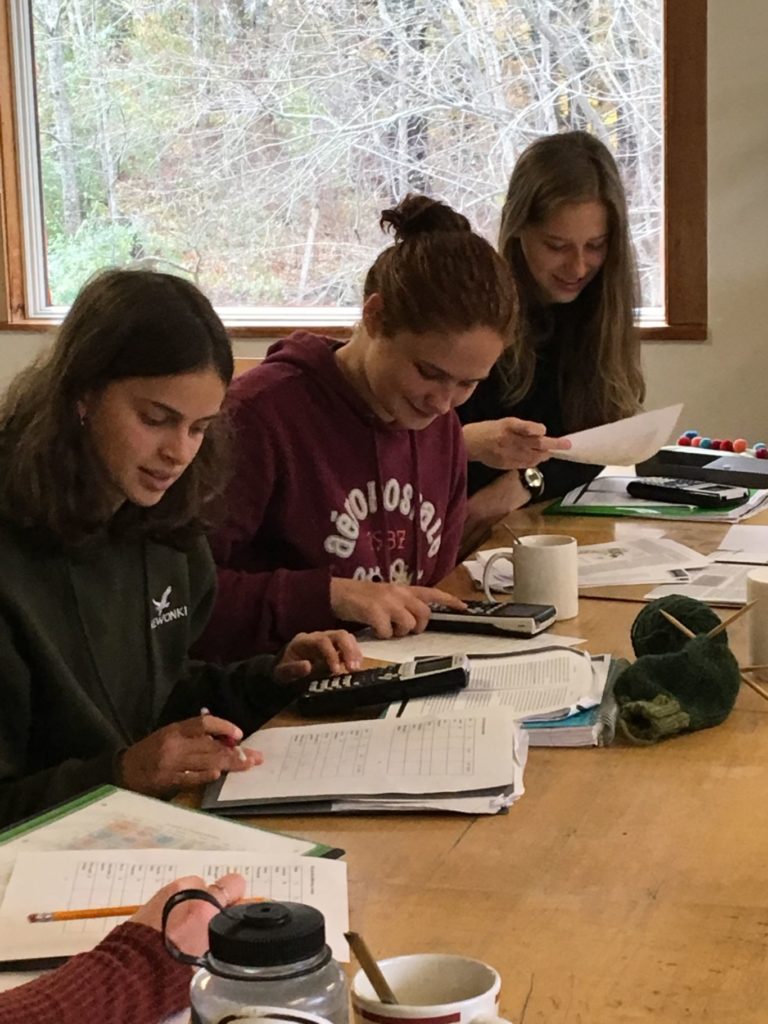
Higgins feels a sense of urgency in this course. “There is a unique importance to the subject,” she says. “I want to help these students learn to solve problems and be engaged in the world. I want to give them agency. I want them to understand environmental problems in a more complex way.”
“This class is about looking harder, looking deeper, and deciding what to do,” says Sniffen. The sense of need will intensify when the students study climate change. especially when they simulate the Paris Climate Accord negotiations.
Higgins is relishing “learning from a great teacher.” She sees teaching as a high-impact craft. “Whatever I’m doing, I want to work on global change,” she says. “I think everyone should be doing this in the way that best plays to their strengths. For me, teaching does this. It involves the inspiration of inquiry and helping students find answers. If that results in conservation of the planet, then I will feel doubly fulfilled.”
